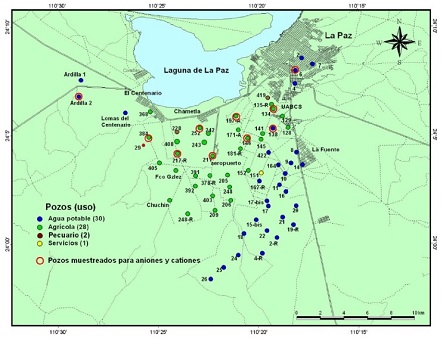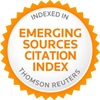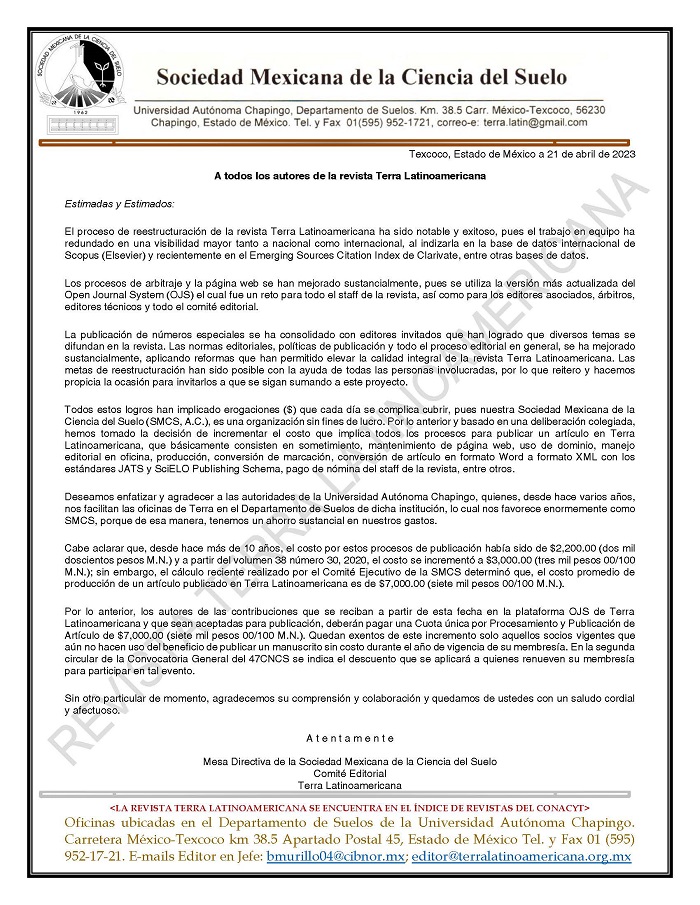Evolution of sea water intrusion and ionic ratios in the aquifer of La Paz BCS, Mexico
DOI:
https://doi.org/10.28940/terra.v41i0.1636Keywords:
anions and cations, coastal water table, groundwater contamination, TDS distributionAbstract
Since many years ago the aquifer of La Paz is overexploited and with pollution problems due to seawater intrusion. Through an analysis of total dissolved solids (TDS), main anions and cations, from 2013 to 2019, it was found that the front of the marine wedge considering the 1000 mg L-1 isoline moved a maximum distance of 8.8 and 8 km on two main fronts, the north zone delimited between the Chametla and El Centenario ejidos, and the northeast zone located to the east of the Chametla ejido and south of the city of La Paz. Throughout the period, the TDS concentrations remained with little variation without significant increase. Most of the sampled agricultural wells had concentrations greater than 1000 and 2000 mg L-1, unlike the potable water wells with concentrations less than 1000 and 500 mg L-1. A high concentration of chlorides, sodium and calcium, whose evolution was very similar to that of the TDS was observed. With dif ferent ionic ratios it was possible to support the theory that the increase and permanence of salinity is due to seawater intrusion. However the freshwater-saltwater mixing zone is derived from a combination of groundwater recharge with seawater. Based on the obtained results, it is estimated that agricultural wells have not increased their extractions and that most of the potable water wells are still out of the reach of contamination since the area where they are located is very dynamic and appears to have high permeability conditions.
Downloads
Publication Facts
Reviewer profiles N/A
Author statements
- Academic society
- Terra Latinoamericana
- Publisher
- Mexican Society of Soil Science, C.A.

















